Have you ever had that nagging feeling that you’re just one skill away from being as slick and resourceful as a character out of a classic spy thriller? Well, same here. The intrigue of lockpicking always piqued my interest—it’s not just for the clandestine operatives in movies anymore.
In fact, it’s evolved into an actual competitive sport! Diving headfirst into research to satisfy my curiosity, I unlocked (pun intended) the techniques and nuances behind this crafty skill.
This guide is designed to demystify lockpicking and lay it out so simply that even novices will hear that satisfying ‘click’. It’s about time we channel our inner espionage enthusiast with some real-life savvy!
Key Takeaways
Lock picking is about understanding and moving the pins in a lock to open it without a key, using special tools like tension wrenches and picks.
It takes practice to get good at lock picking; you need patience and a gentle touch, starting with simple locks and working up to more complex ones.
Always check local laws on lock picking, since having these tools could be seen as suspicious in some places. Only pick locks that you own or have permission to work on.
Essential lock – picking tools include different types of picks like hooks and rakes, tension wrenches for turning the lock cylinder, and sometimes bump keys which can quickly open many locks.
To start learning how to pick a lock, apply light pressure with a tension wrench, then use your picks to set each pin until they all reach the shear line, allowing the plug of the lock to turn.
Table of Contents
Understanding Lock Picking
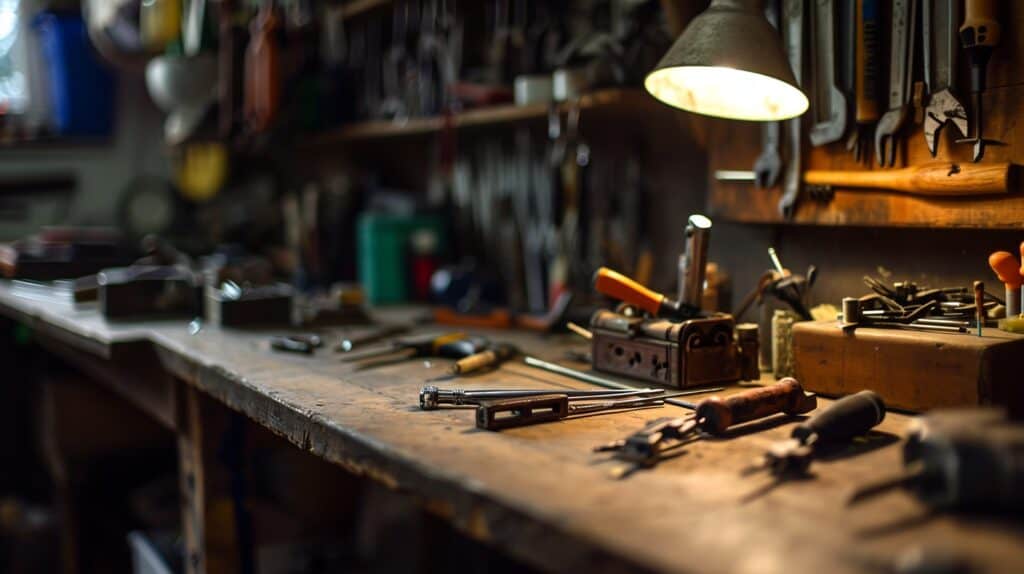
So, I’ve taken you through what makes lock picking a cool hobby. Now let’s get down to the nitty-gritty. Figuring out how locks work is the key to picking them like a pro. Different types of locks have their own tricks, but most everyday padlocks and door locks are pin tumbler locks.
You’re using tiny tools to move the pins just right, so the lock opens without a key.
Think of it as a puzzle where you feel for clues with your hands. You’ll need patience and sharp senses because each pin in the lock has its favorite spot where it needs to be nudged to unlock secrets—quite literally! It’s not just about force; it’s more like touching art, where every movement counts.
If James Bond or Jason Bourne were teaching this, they’d say it’s all about finesse and being sneaky with those pins.
Essential Tools for Lock Picking
Before we dive into the nitty-gritty of tickling those tumblers like a locksmith maestro, let’s chat about your bread and butter—lock picking tools. Think of them as the paintbrushes to your masterpiece; without ’em, you’re just a guy staring at a stubborn lock.
Hooks
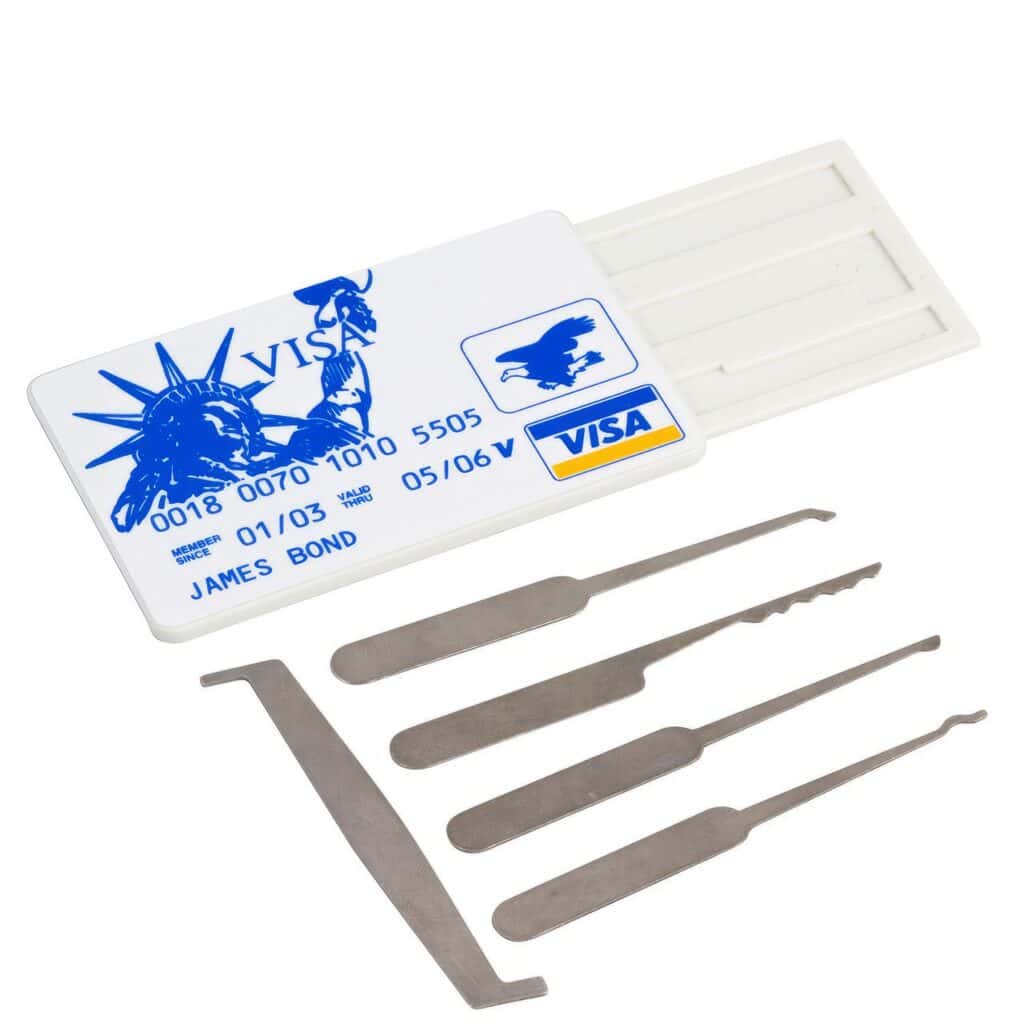
So, you want to get into lock picking? Let’s talk about hooks; they’re one of the must-have tools in your lock pick set. Think of a hook pick as your trusty sidekick for tackling those pin tumblers inside a cylinder lock.
Its shape is simple – kind of like the dental tool that checks for cavities, but don’t go using it on your teeth! You use this little guy to push up each key pin and driver pin one at a time.
It takes some skill, sure, but with practice, feeling that click when you set a pin right where it needs to be is pretty sweet.
You’ll find different kinds of hooks – short, medium, or long – and they each have their job depending on what pins you’re dealing with (those security pins can be tricky). But hey (and this is just between us), if I had to choose one hook to take to a desert island… okay, weird scenario for lockpicking… but I’d go with the short hook. It’s super versatile! Keep practicing and soon enough you’ll be ready for rakes, which we’ll dive into next.
Rakes
I’ve got to tell you about rakes – they’re like the secret weapon for lock picking. Imagine you’re painting a fence, back and forth with broad strokes; that’s kind of what using a rake on a lock feels like.
You pop it in there, give it a good scrubbing motion, and bam! The pins jump up to meet the shear line, just like kids at an ice cream truck. It’s fast, it’s fun, and let me tell you – nothing beats that satisfying click when the lock turns.
Now here’s the kicker: raking is super useful for simple locks where precision isn’t as much of a big deal. But keep in mind – if you’re facing some high-security fortress of a lock, raking might be about as effective as trying to tickle your way into Fort Knox.
Still, I always have my trusty rake handy because when it works – oh boy does it work! It gets me through most padlocks faster than I can say “open sesame.” And yeah, sure, sometimes those fancier spool pins play hard to get, but hey – life needs a little challenge now and then, right?
Tensioning Tools
Alright, fellas, let’s talk about tensioning tools. They’re like the steering wheel of your car when you’re driving down lock picking lane. You’ve got two types to choose from: Bottom of Keyway (BOK) and Top of Keyway (TOK).
These bad boys are what put the necessary twist on the core of a lock, which is key—no pun intended—to get those pins to set just right.
Here’s why you need them: without a good tension wrench, you might as well be trying to pick a lock with a wet noodle. You need that rotational pressure to create binding pins so they’ll stay put once you’ve lifted them up where they belong.
Imagine trying to open a door by turning the knob ever so gently; that’s how delicate, applying light tension needs to be—it shouldn’t feel like an arm wrestling match!
Moving on from these handy tools, I’ll show you that pesky cylinder lock—and trust me, knowing your enemy is half the battle won.
Bump Keys
Bump keys are like a secret weapon for lock pickers. You might not hear about them much, but man, they’re cool! They fit into the keyhole of a pin tumbler lock—just like your house key does.
Here’s the trick: you tap on the bump key while turning it with a little pressure. This can make the pins jump and—voilà—the lock turns as if by magic.
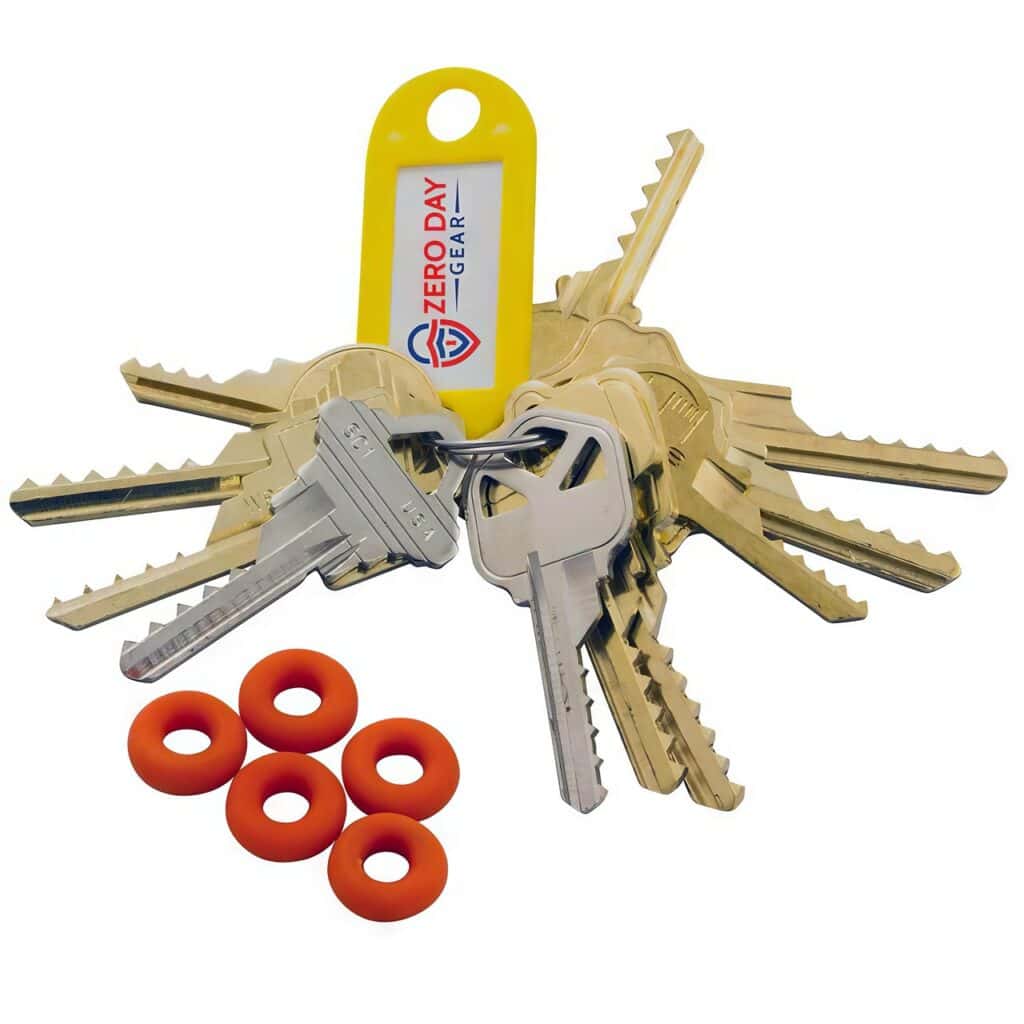
Now, I want to clear something up. Using bump key sets isn’t always seen as playing fair because they can open locks superfast without needing much skill. But hey, we’re here to learn all about lock picking, right? So think of bump keys as a neat tool in your kit.
If you’ve got permission from whoever owns the lock, give them a try! It’s all part of becoming an awesome lock picker.
Remember, though—always play it cool and keep things legal when having fun with these tools or any others we chat about here. Happy picking!
How a Pin Tumbler Lock Works
Ever peeked inside a lock and wondered what’s going on in there? I mean, you stick the key in, give it a twist, and voilà—the magic happens. But let me tell you, it’s less about magic and more about an intricate dance of tiny pins—sort of like a mechanical ballet hidden away in that little metal cylinder.
Dive deeper with me, and we’ll unravel the mystery of pin tumbler locks together; trust me, it’s fascinating stuff!
Lock Cylinder
Okay, so imagine the lock cylinder as the brain of a lock. It’s where all the action happens when you stick a key in. Inside this little round space, there are some tiny pins and springs that need to line up just right for the lock to open.
You’ve probably heard of pin tumbler locks; they’re super common and what we’re getting into with lock picking.
Now, I’m not going to throw big words at you—let’s keep it easy. The goal is to move those small key pins and driver pins until they reach what’s called the shear line. That’s like an invisible finish line inside the cylinder where if everything lines up perfectly, bam—the plug can turn, and you’ve got yourself an open lock without needing a key! Sure sounds cool, doesn’t it? Well, that’s because it is! And guess what? With some practice (and patience), you can get pretty good at making those pins hit their mark every time.
Plug
The plug is like the heart of a lock, where all the magic happens. It holds those little key pins, and I need to turn it just right to crack open a lock. Now, light tension on that wrench makes one pin stick—that’s my cue.
That’s when I know I’m on my way to pop it open. The trick? Figuring out which way this thing wants to turn—clockwise or counterclockwise.
I can’t stress how important the plug is in lock picking. It’s tricky, though; you gotta be gentle but firm with the tension wrench because if you use too much muscle, you’ll jam everything up.
And trust me—no one wants that while trying their hand at this great hobby for men! So keep it light, find that binding pin, and before you know it—you’ll have that cylinder turning as smooth as butter.
Shear Line
So, here’s the deal with the shear line. It’s like an invisible straight line in a lock that separates two sets of pins—key pins and driver pins. To get a lock to open, you’ve got to line up all the pins right on that shear line.
It’s not about luck—it’s all skill.
I’ll put it plain—you want those key pins and driver pins to meet so nicely at the shear line that when you turn your tool, voilà! The plug spins, and bingo, the lock opens. And yes—getting this just right means being spot-on with how much force you’re using because too much or too little can ruin your day faster than forgetting your anniversary.
Key Pins
Alright, let’s talk about those key pins now. They touch the key when you put it in the lock. Imagine them as tiny dancers waiting for the right music—your key—to dance to the perfect height.
Every pin is special and matches a spot on your key. If they don’t meet at just the right line inside the lock, nothing moves, and that door stays shut tight.
The magic happens when you slide your key in and every little pin lines up exactly where it should be along that shear line I told you about earlier. Think of it like trying to balance a pencil on its tip; everything has to be just so, or it topples over.
That’s what these pins are doing—lining up perfectly so that the lock turns smoothly without any hiccups. Keep practicing with your picks and tension wrenches, and before long, you’ll get those pins dancing to your tune instead of just their own!
Driver Pins
Driver pins are the little buddies that need a lift to get where they’re going. Picture them sitting on a fence—the shear line—waiting for the right pick to come along. My job? I slide my tension wrench into the plug, apply just enough twist to make one of these pins start dancing.
Once it’s hopping up and down, I know it’s game time.
Now, with the right touch of pressure from my lock pick, I nudge each driver pin up until it catches onto that ledge above our friend the shear line. It’s like helping kids onto a merry-go-round; they have to be at just the right height, or they won’t stay put! And there you go—that’s how you set those pins and get closer to popping that lock open.
Next up is learning about what gives these pins all their pep: springs.
Springs
So, let’s talk about the tiny but mighty springs in your lock. These little coils are like mini trampolines for the pins inside the cylinder. They push back when you apply pressure with your lock pick.
Think of it this way: they’re what makes picking a lock more than just sticking something in there and wiggling it around.
Now, these springs play hard to get by keeping the pins lined up at the shear line—yep, that’s locksmith speak for “the sweet spot.” Here’s where things get interesting; depending on how strong or weak those springs are, I could have an easy ride or quite the challenge ahead.
You see, getting under each pin and nudging it just right without messing up its neighbors takes some finesse—and understanding how these springs work is key (pun intended).
Alright then. Got all that? Good! Because next up we’re going to dive into techniques to actually pick those locks.
Techniques for Lock Picking

Alright, let’s dive into the real fun part – techniques for lock picking. This is where you’ll transform from curious newbie to a crafty picker; it’s like learning the secret handshake of an exclusive club—except your hands are busy wiggling picks and wrenches inside a lock.
Single Pin Picking Technique
Hey there! I’m diving right into how you can master the single pin picking (SPP) technique. It’s a great way to challenge your mind and hands, plus, it’s pretty cool.
- First off, grab your tension wrench and carefully put it into the bottom of the lock. You need this tool to turn the plug just like a key would.
- Now give a gentle twist with that wrench. Not too much! This step creates what’s called the binding pin – it’s the one you’ll pick first.
- Next up, take your hook – type pick. Feel around in there for that first stubborn pin.
- Once you’ve found it, nudge that pin up slowly. Listen close for a tiny click. That sound? That’s winning – you’ve set the pin at the shear line.
- Keep holding that tension wrench steady. If you ease up too much, those pins will drop back down, and you’ll have to start again.
- Move on to find and set each pin one at a time. It’s like playing a tune on a piano, but instead of notes, it’s clicks.
- And hey, if one of them feels stuck or won’t budge, ease off the pressure just a tad then try lifting again.
Apply Tension to Create the First Binding Pin
Let’s dive right into making that first pin bind. You’ve got your tension wrench, lock picks, and a stubborn lock staring you down. First thing’s first — take the tension wrench in hand and gently push it into the bottom of the keyway.
Now, this part is like trying to pet a cat without getting scratched; too much force and the pins get all prickly, too little, and they won’t budge. So give it just enough twist to make one pin stick while letting the others stay loose.
I find that pretending I’m turning a delicate key helps me keep my touch soft but firm. It’s all about finding that sweet spot of pressure where you’ll feel one pin resisting more than its buddies—that’s your binder! Once you’ve set up camp at this point, pat yourself on the back because now we’re ready for some real action with our hook pick! Keep that gentle hold on your tension tool; we’ll be using it like an anchor as we navigate through those pins ahead.
Locate the First Binding Pin
So, you’ve got tension on the lock. Great! Now comes a bit of detective work—finding that first binding pin. Feel around with your hook pick; you’re looking for the one pin that seems to stick more than the others.
This sticky fellow is what you want to nudge first.
You’ll know when you’ve found it because it won’t move up and down as easily as its neighbors. Once you do find it, apply a gentle push with your pick until it clicks into place right at the shear line.
It’s like finding Waldo in those busy pictures; when you do, it feels so good. Just remember not to force anything—a light touch is key here or else pins will get bent and all sorts of mayhem can ensue!
Lift and Set the First Binding Pin
Okay, we’ve got tension on the lock and found that stubborn binding pin. Now it’s showtime! Gently push your pick under the pin. You’ll feel some resistance—that’s normal. Push it up slowly until you hear a click or sense a slight movement in the tension wrench.
That little “click” means success; you’ve lifted and set the pin right at the shear line.
Keep your touch light—think of it as trying to pet a small bug without scaring it away (yeah, I know). If you jam that pin too high, oops… you’ll overset it and might have to start over.
Just keep practicing until finding and lifting those pins feels like second nature. Remember, patience is key here—like learning any new skill, practice makes perfect!
The Raking Technique
So, you’ve got the hang of lifting and setting pins one by one. Let’s shift gears to a different method – the raking technique. It’s a cool trick for lockpicking newbies and can open up locks pretty swiftly!
- First things first, grab your tension wrench and gently turn it in the direction the key would normally go. This creates a little bend called a binding pin.
- Now, take out your rake tool. You’re going to nudge those pins into place. Slip the rake into the lock right above where your tension wrench is.
- Time for some action! With a light touch on that tension wrench, use the rake to brush over the pins in a fast scrubbing motion.
- Imagine you’re painting with quick, light strokes but instead of paint, you’re using pressure to pop those pins where they need to be.
- Mix it up as you go – change how hard you press down, fiddle with angles, and try different speeds. See what feels right.
- Keep this dance going until all the pins set into place; you’ll feel them click if you’re doing it right.
Apply Tension to Create a Binding Pin
Now, let’s kick it up a notch and get to creating that binding pin. This is the heart of lock picking. You’ve got your tension wrench, right? Good stuff! You’ll need to gently turn the plug with this tool just like you’re turning a key.
But keep it light, we’re not snapping keys off here.
As you apply that slight twist, one pin will get stuck before the others do—that’s your binding pin. It’s feeling all the pressure because you’re doing things right with your tension wrench! This sneaky little guy won’t move until you tickle it into place with your pick.
So take a deep breath and get ready for some action – finding and lifting this stubborn fella is where the magic happens!
Insert Lock Pick and Scrub the Pins
Got that tension just right? Great! Let’s get to the next step. Take your rake – it’s one of the basic picks, remember? Glide it into the lock, where those pins are waiting. Now, here comes the fun part: scrubbing.
Imagine you’re brushing your teeth, but with a gentle touch and in tiny back-and-forth motions.
Make sure to keep a steady pressure on your tension wrench while you do this. You’ll feel if a pin sets because there will be a slight movement in your tension tool or even a small click sound from inside the lock.
Keep at it, raking back and forth over the pins, but don’t force anything – finesse is key here! And who knows? With some patience and practice, those pins might just line up along the shear line like obedient little soldiers, giving you that satisfying turn of the cylinder.
The Legality of Lock Picking
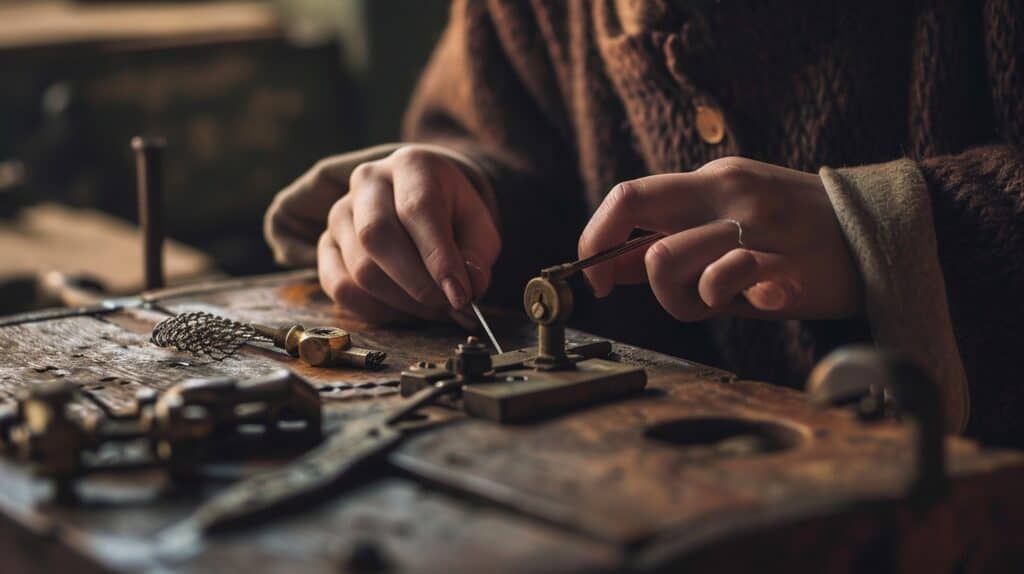
So you’re curious about lock picking, huh? Fair enough, but let’s chat about whether it’s okay to do. In many places, it’s totally fine to pick locks as a hobby or for learning—as long as you’re not up to anything shady.
Think of it like this: just like you wouldn’t walk into someone else’s house without asking, don’t poke around in their locks without permission.
Here’s the tricky part, though—having lock picks might make folks think you’re planning something naughty in some states. Always keep in mind that if your state considers these tools suspicious on their own, staying on the right side of the law means knowing and following the rules where you live.
So before diving into this new skill, check out your local laws and stay clean!
Practice, Practice, Practice
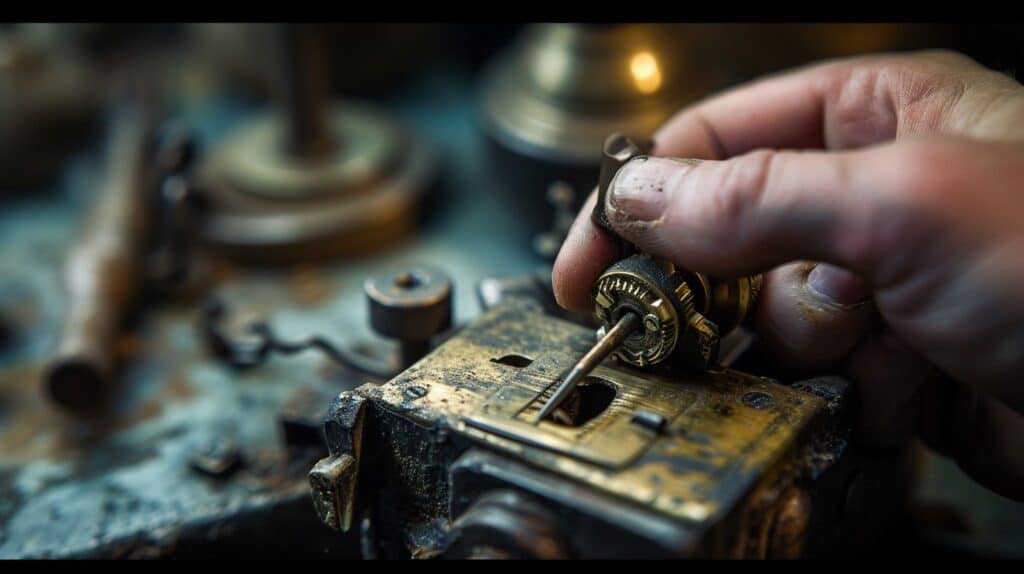
Okay, let’s talk about getting good at lock picking. It’s like learning to ride a bike or playing the guitar — you’ve got to do it over and over. Grab some different locks, maybe an old door lock or a padlock you’re not using anymore.
Start with simple ones and work your way up to tougher challenges.
You’ll need a practice lock too; they’re clear so you can see what’s happening inside while you work. It helps me understand where I’m going right (or wrong). Just keep at it! Sometimes pins won’t set the way we want, but that’s part of learning; each mistake shows something new.
Try again until the mechanism turns smoothly without forcing it — that’s when you know you’ve got it! And hey, don’t be hard on yourself if it takes time to get slick at this skill.
Every pro was once a beginner, just like us.
Now grab those picks and tension wrenches, find yourself a comfy spot and start practicing away! Locks are puzzles waiting for solutions, and with enough tries, your fingers will learn their secrets soon enough.
Taking Your Lockpicking Skills to the Next Level
Lock picking is a cool skill, kind of like solving puzzles with your hands. Remember, it’s not just for getting through doors when you’ve lost your keys. Think of it as a fun hobby or a brain-teaser that gets more exciting as you get better at it.
Just make sure to always pick responsibly and know the rules where you live. Now grab your picks, and may the pins be ever in your favor!
FAQs About How to Learn Lockpicking
What’s lockpicking, and can it be a hobby for me?
Lockpicking is like solving puzzles with locks! It’s perfect for hobbies whether you’re in your 20s or older. You use tools to open a lock without the key—no breaking stuff!
Are there different types of locks I can learn to pick?
You bet! There are tons of locks: cylinder, warded, combination, lever, wafer… even bicycle and dimple locks. Each has its own little trick.
Do I need fancy tools to start lockpicking?
Nope—not at all! Start simple with just a tension wrench and maybe some picks you get from Amazon.com (make sure your credit card is ready at checkout!). Chris Dangerfield? He knows his stuff; look him up!
Is lockpicking legal? Don’t wanna get in trouble…
Ah, the big question! Yes, it’s legal for fun or as a skill like locksmiths have—but only on your own locks or with permission. No sneaky business now!
Can learning to pick locks help me somewhere else?
It sure can—think about penetration testing; that’s checking security systems but digital style! Know how things unlock helps figure out how they might break down, too.
Where do I learn more about this cool skill?
Well, my friend, hop onto the internet express—with SSL encryption keeping things safe—and search away! Just remember—lockpicking is powerful, so always use your newfound skills wisely.






